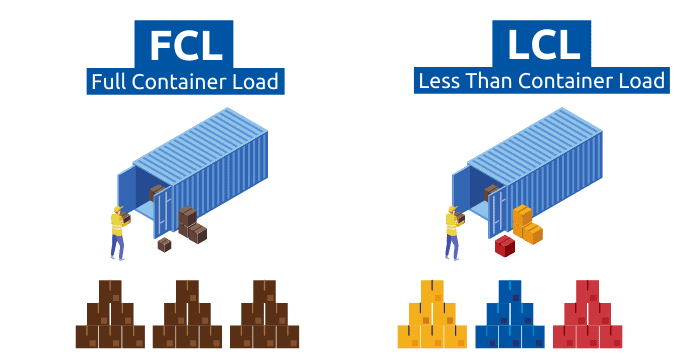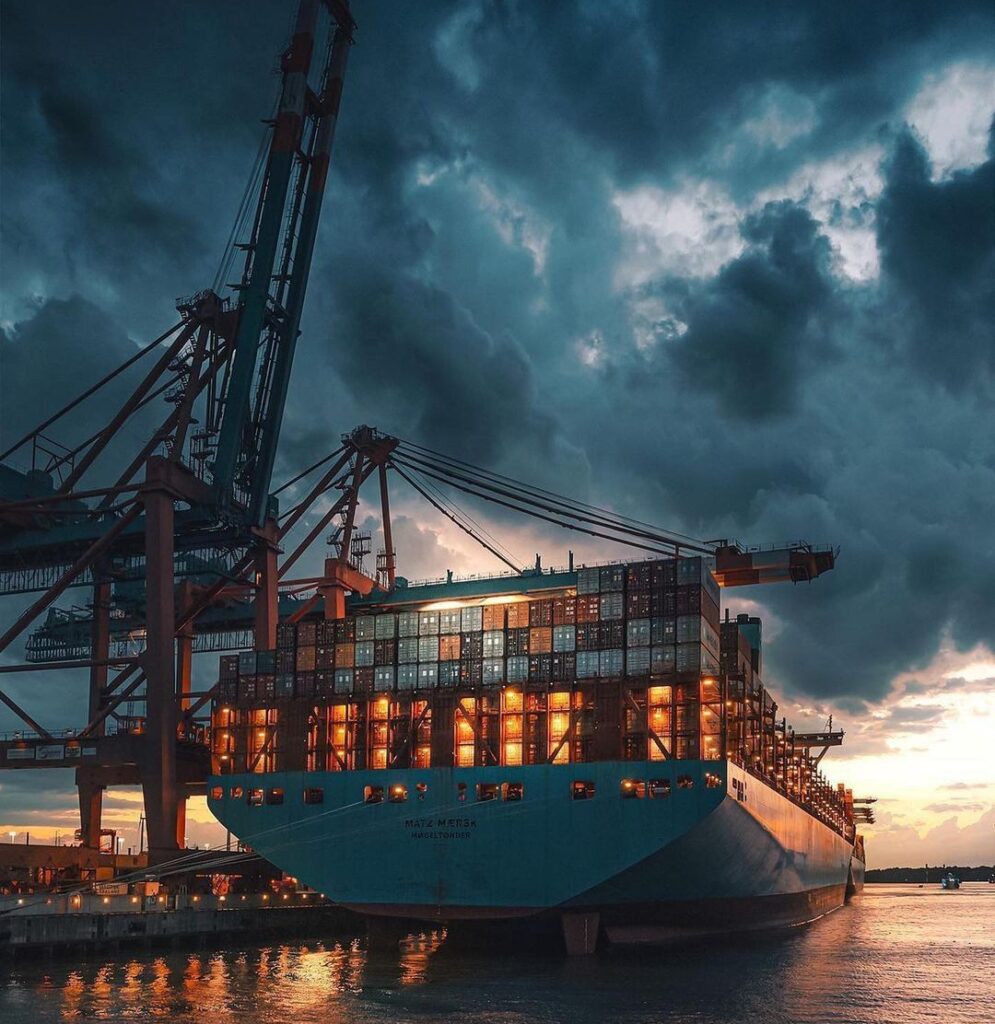Shipping goods from China to Europe requires one crucial decision upfront — should you go with FCL or LCL shipment?
1. What is FCL and LCL Shipment?
In international logistics, FCL and LCL are two common methods of container shipping used to move goods across long distances, such as from China to Europe.
- FCL (Full Container Load) means your cargo fills an entire shipping container. The container is used exclusively for your shipment, even if it’s not completely full. It is sealed at the origin and opened only upon arrival at the destination.
- LCL (Less than Container Load) allows multiple shippers to share space within the same container. You only pay for the volume or weight your goods occupy, while other shipments fill the remaining space.
Both FCL and LCL are used for ocean and rail freight. The choice between them depends on factors like shipment size, urgency, cost, and product type.
Understanding the difference between FCL and LCL is essential for making the most efficient and cost-effective shipping decision for your business.
2. Quick Comparison: FCL vs. LCL
| Feature | FCL Shipment | LCL Shipment |
|---|---|---|
| Container Use | Full container | Shared container |
| Pricing | Flat rate per container | Based on volume/weight |
| Best For | 15+ CBM or 10+ pallets | <15 CBM |
| Handling Risk | Low (sealed container) | Higher (consolidated cargo) |
| Transit Time | Shorter | Longer |
| Security | High | Moderate |

3. Volume Guidelines: When to Choose FCL or LCL
Choosing between FCL or LCL shipment largely depends on how much you’re shipping. While there’s no strict rule, freight forwarders generally use volume (measured in cubic meters, or CBM) and pallet count to determine the best option.
General Thresholds:
| Shipment Volume | Recommended Shipping Method |
|---|---|
| 1–5 CBM | LCL |
| 6–14 CBM | LCL (cost-effective, flexible) |
| 15–28 CBM (partial 20ft) | FCL may be more economical |
| 28–33 CBM (full 20ft) | FCL strongly recommended |
| 33+ CBM (approaching 40ft) | FCL (consider 40ft container) |
Pallet Reference:
- A standard 20-foot container holds about 10–11 standard pallets.
- A 40-foot container holds about 20–21 pallets.
If your shipment takes up more than half of a 20-foot container (roughly 15 CBM or 6+ pallets), FCL often becomes more economical than paying for LCL by volume.
Practical Tips:
- Borderline volume (12–15 CBM)? Always ask for quotes for both FCL and LCL to compare total landed costs.
- Irregular cargo shapes or fragile goods? FCL may still be better, even at lower volumes, due to lower handling risk.
- Shipping regularly in small volumes? LCL is more practical, but monitor your average shipment size to switch to FCL if needed.
Recommendation: Track your monthly shipping volume. If you’re consistently shipping over 15 CBM or multiple pallets per order, switching to FCL can save time and reduce unit shipping costs.
4. Choosing the Right Mode and Method: FCL or LCL by Rail or Sea
Your decision isn’t just about FCL or LCL — it’s also about how you ship: rail or sea. Here’s how to factor it in:
Key Considerations When Choosing:
- Volume: LCL for <15 CBM, FCL for larger loads
- Speed: FCL and rail are faster; LCL and sea are slower but cheaper
- Budget: LCL reduces upfront cost; FCL saves per unit long-term
- Product Type: Fragile or high-value goods are safer in FCL
- Shipping Frequency: LCL offers more flexibility for irregular schedules


5.Advantages of FCL and LCL Shipment
Advantages of FCL (Full Container Load)
- Lower Cost per Unit: More economical for high-volume shipments.
- Faster Transit Time: No consolidation or deconsolidation delays.
- Better Security: Goods are sealed in a dedicated container.
- Less Handling: Reduced risk of damage or misplacement.
Advantages of LCL (Less than Container Load)
- Cost-Effective for Small Loads: Pay only for the space you use.
- Flexible Scheduling: Ideal for irregular or smaller shipments.
- Lower Upfront Investment: No need to wait until you can fill a container.
- Scalable: Perfect for startups or growing businesses.
6.Benefits of Choosing LCL
LCL (Less than Container Load) is a practical shipping option for businesses that don’t need a full container. Here are the main advantages of choosing LCL:
📍Lower Upfront Costs
You pay only for the space your cargo uses, making it more affordable for smaller shipments.
📍 Flexible Volume
LCL allows you to ship small quantities without waiting to fill an entire container, which is ideal for irregular or low-volume orders.
📍Frequent Departures
LCL shipments often depart on regular schedules, especially on high-demand routes like China to Europe.
📍Scalable Option
LCL is suitable for growing businesses. You can start small and transition to FCL as your shipment volume increases.
📍Market Testing Friendly
LCL is ideal for testing new products or entering new markets without committing to large inventory levels.
7. Final Recommendation
Choosing between FCL and LCL depends on your shipment size, budget, and delivery needs.
- FCL is the better choice if you ship in large volumes, require faster transit, or need greater cargo security. It’s ideal for regular, high-volume shipments where cost per unit matters.
- LCL is suitable for smaller, flexible shipments. It allows you to ship without waiting to fill a container and keeps upfront costs low—perfect for small businesses or occasional imports.
Evaluate your current volume, shipping frequency, and delivery timeline. As your business grows, you may start with LCL and transition to FCL for better long-term savings and efficiency.
Request a Quote
Need a tailored solution for your shipping from China?
Let TJ China Freight Forwarder assist you with reliable, cost-effective service.
FAQ:
Q1. What’s the minimum volume for FCL?
Around 15 CBM is the usual threshold for cost-efficiency.
Q2. Is LCL less secure?
Yes, due to shared space and extra handling.
Q3.Can I switch from LCL to FCL later?
Absolutely — once your volume grows, FCL is more cost-effective.
Q4. Are customs steps different?
Slightly. LCL includes consolidation steps, so it can take longer.
Q5.Which one is faster?
FCL, since it skips consolidation and deconsolidation.
